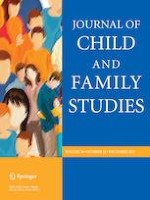23-10-2021 | Original Paper
Hope as a Protective Factor: Relations to Adverse Childhood Experiences, Delinquency, and Posttraumatic Stress Symptoms
Gepubliceerd in: Journal of Child and Family Studies | Uitgave 12/2021
Log in om toegang te krijgenAbstract
Adverse childhood experiences (ACEs) predict poor outcomes in adolescence, including delinquency and internalizing symptoms such as posttraumatic stress. In the current study, we investigated the hypothesis that hope has protective effects for adolescents by reducing the strength of associations between ACEs and delinquency and posttraumatic stress symptoms. Participants included 1236 adolescents from 13 schools in a large metropolitan area. ACEs were directly associated with both delinquency and posttraumatic stress symptoms. Direct associations between hope and both delinquency and posttraumatic stress were also found, such that greater hope was associated with fewer delinquent behaviors and fewer posttraumatic stress symptoms. Hope also functioned as a moderator; higher levels of hope weakened the strength of the association between ACEs and delinquency. In exploratory follow-up subgroup analyses, this pattern was supported among 6th grade students, but not among 9th grade students. Implications of these findings for preventive interventions are discussed.
